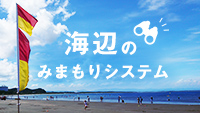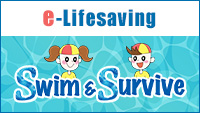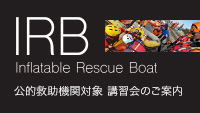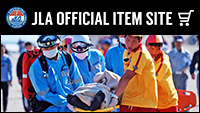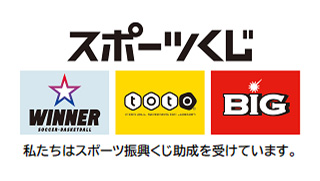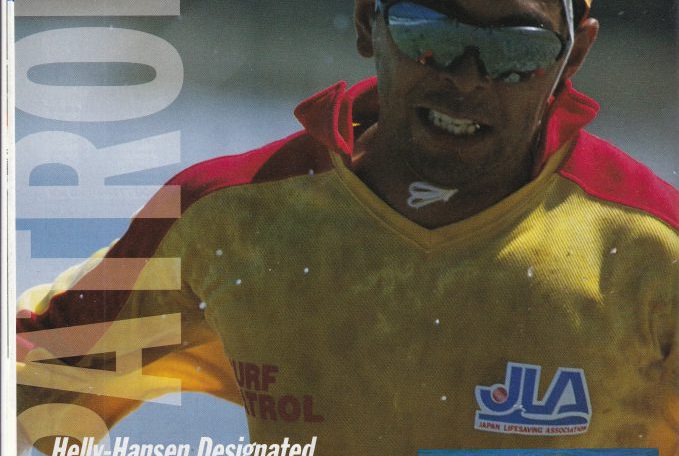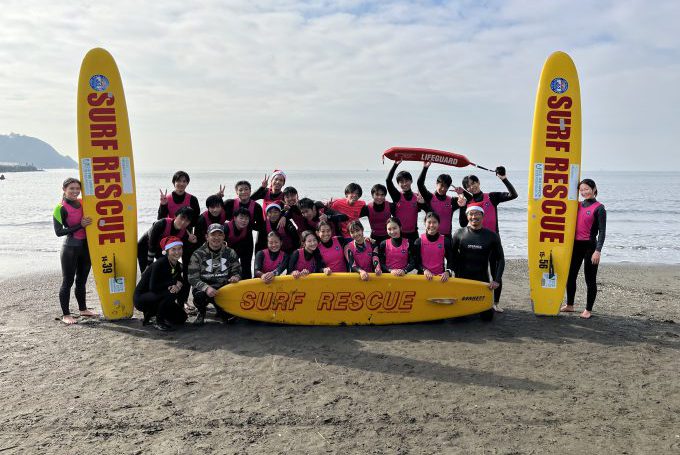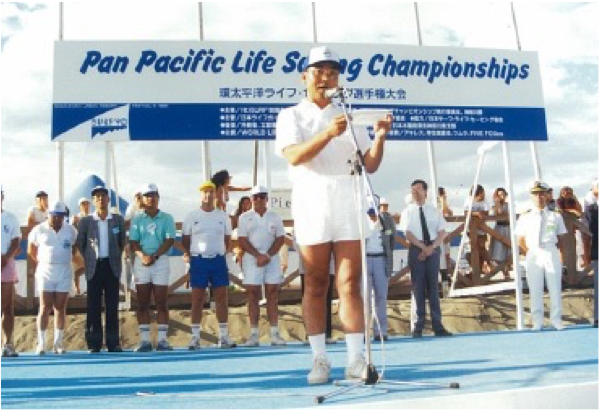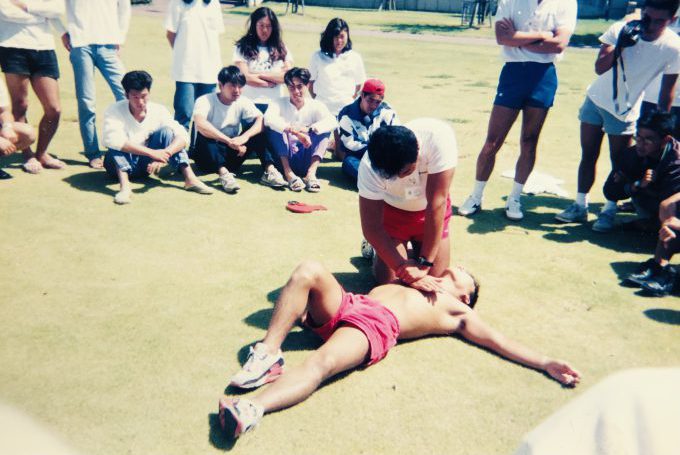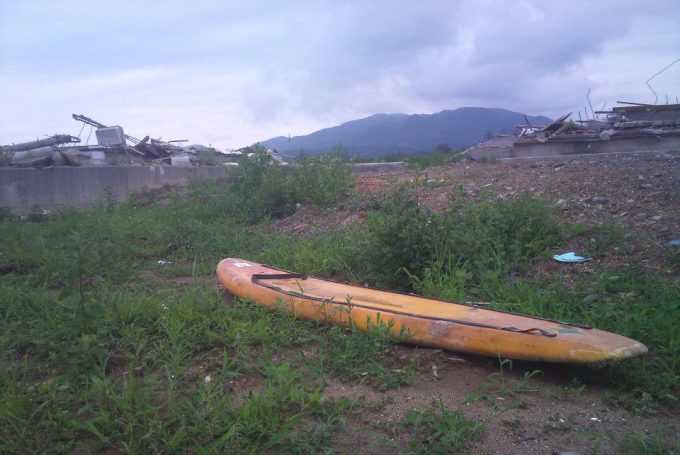
The Australia-Japan Foundation support and Lifesaving activities in Japan
Akiko Hisamatsu
English below.
1983年。日本のライフセービングがギアをあげた。
どうギアをあげた?
海だ、レスキューだ、仲間だ。
知りたい。
組織の構築、統一されたマニュアル作り、指導者養成、トレーニング方法、さらに各クラブの運営方法、と何もかも。アァ、それから大会の開催の実施まで。学びたい。もっともっと!
なら、ライフセービング歴76年のオーストラリアはどうですか。
オーストラリアの浜と日本の浜で実際にトレーニングをし、パトロールをし、日本に最適な方法を見つけていくのはいかが?と、このライフセーバー同士の交流に、オーストラリア連邦政府の文化機関「豪日交流基金」が支援を申し出ます。
それは、日本のライフセービング界の歴史における実に画期的な出来事になりました。
この年の8月、当時のオーストラリア協会(SLSAA)からGus Staunton, Warren Rennie, Ron Rankin役員3氏が1本のレスキューボードをお土産に来日。日本初のこのボードのトレーニングは、下田・吉佐美の浜でRon Rankin氏によって始まりました。
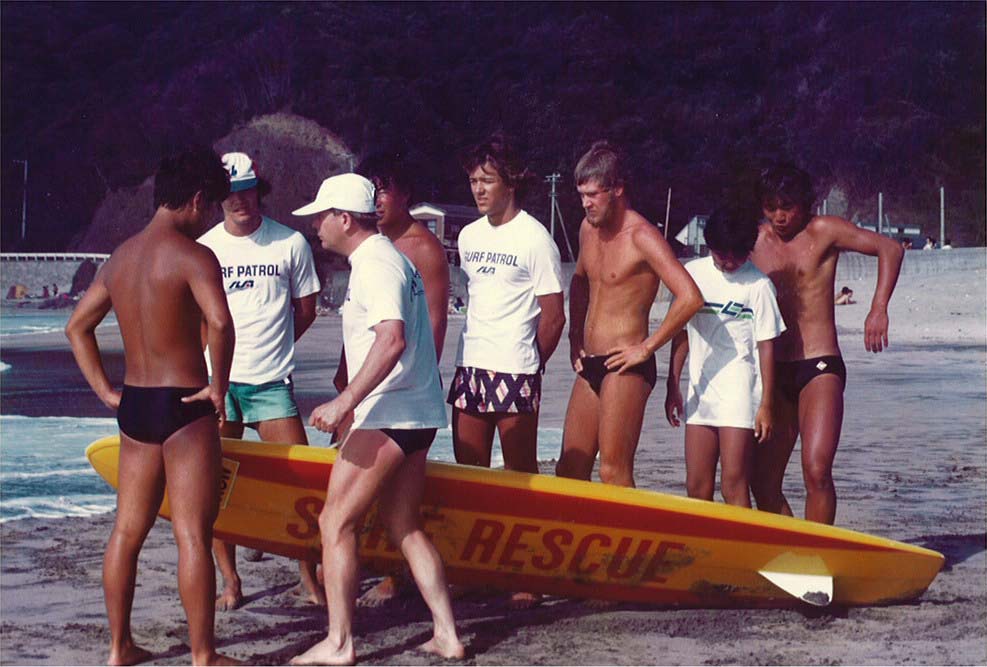
★Ron Rankin氏のレスキューボードのトレーニング@下田・吉佐美
写真提供:Ron Rankin氏
12月、夏のオーストラリアを10名の日本の関係者が訪問。日本赤十字社から参加の小島祐嘉氏は「オーストラリアは子供たちに海で遊びながら安全を教える技術が上手だ」と唸ります。また、同社の工藤孝志氏は「溺水事故を防ぐ体制が日本に比べしっかりしていて、とても羨ましかった」とため息。
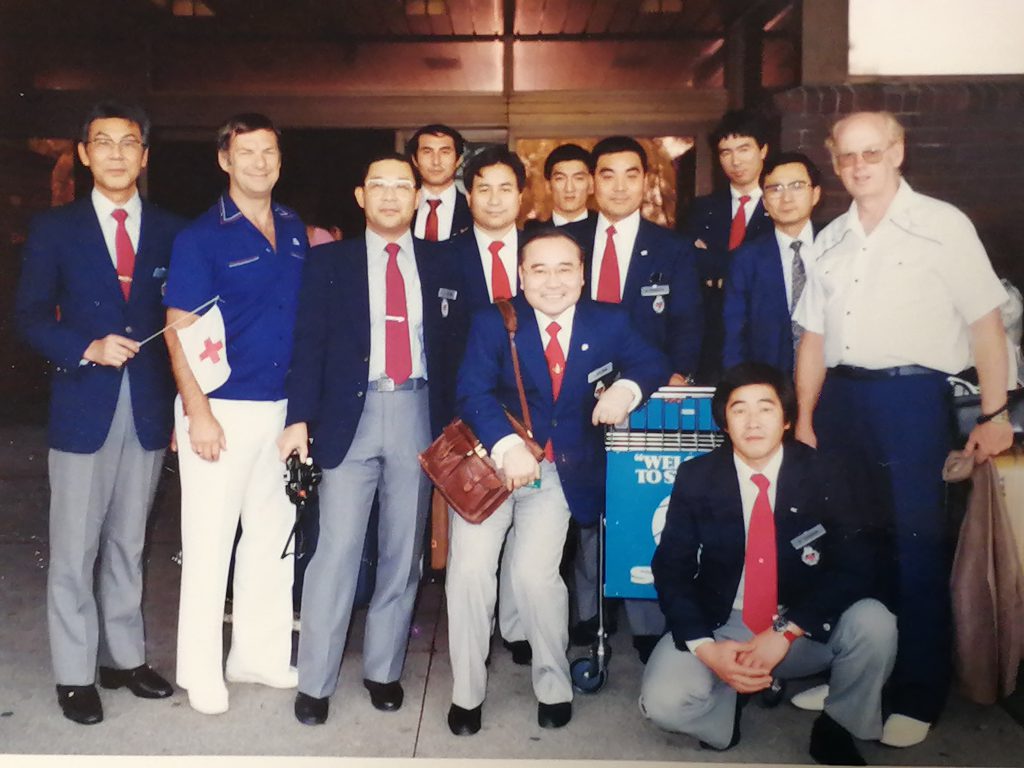
前列左から4番目 ★小島祐喜氏
後列右から3番目 ★工藤孝志氏
写真提供:工藤孝志氏
さらに、日本から3人のライフセーバーがオーストラリア・クナラへ行き、実際のパトロールを体験しました。当時、下田で活動していた築山由雄氏によると、「黄色と赤の2本の旗の間が遊泳エリアで固定ではなく、安全なエリアに移動させている。
それにレスキューボード、レスキューチューブ、バック・ボード、酸素マスク、救急セットなどを積載した四輪駆動車、IRBと救助のための全てが揃い」実に効率的、かつ効果的に浜でのシステムが出来上がっていたそうです。
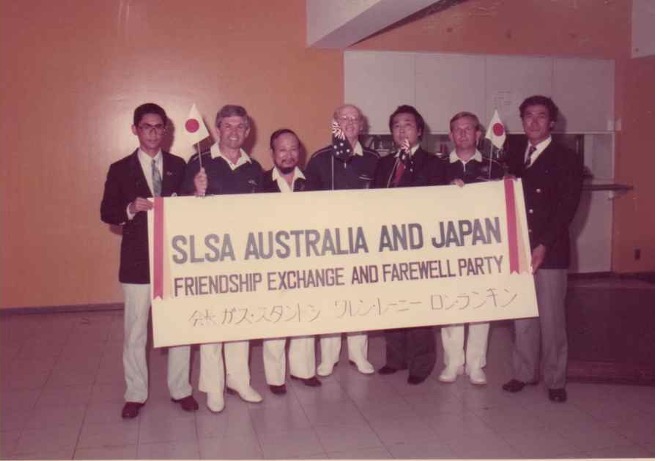
左端 ★築山由雄氏 一人おいてGus Staunton氏
右から2番目、★Ron Rankin氏
写真提供:Ron Rankin氏
また、同氏は「SLSA蘇生法の考え方は、たとえばもし女性や子供が、レスラーのような溺者に遭遇したら日本で当時教えられていた手でなくとも、足で心臓マッサージをするのもOKという考え方で蘇生の練習を中心に指導を受けた。一方、“事故を未然に防ぐ”ことを広く浸透させるという、海での安全を守るルール作り、モラル教育の必要性まで徹底されていた」と話されます。
ここから当時のライフセーバーたちはいっせいに邁進し、今日の全国展開を果たします。
Ron Rankin氏は、ライフセーバーとしてヘリコプター・クルーを長く勤め、SLSAの会長になり、日本の歴代の理事長と親しく交流し、日本との長い友人として2016年には日本ライフセービング協会に楯を寄贈されました。そのRon Rankin Awards楯は、日豪の交流の深さの証として日本のライフセーバー・オブ・ザ・イヤーの歴代のネームプレートが毎年加えられ、今、同協会の壁に掲げられています。
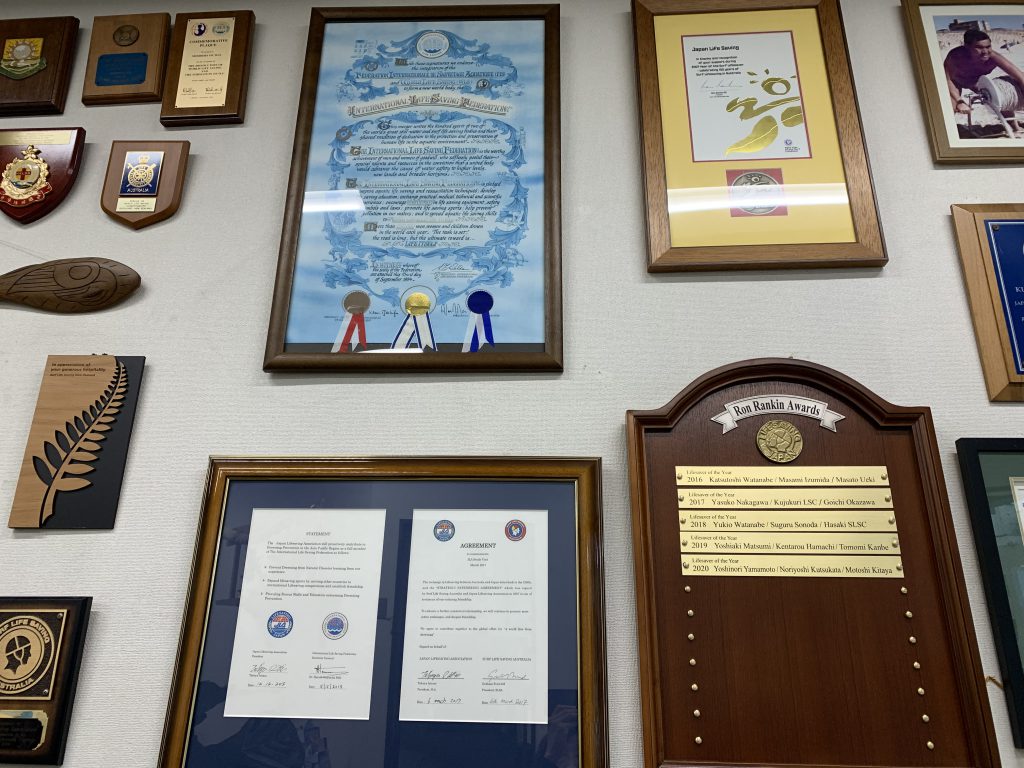
右下 日本ライフセービング協会の壁に掲げられているRon Rankin氏から寄贈された★「Ron Rankin Awards」楯
写真提供:ヒサマツアキコ
In 1983, Japanese Lifesaving activities geared up. What did they gear up for?
Beach, Rescue, Mates!
Hunger for learning about lifesaving.
Building up systems, Standardised manuals, Training the trainers, Methodology of training, Management of clubs, everything under the sun, and do not forget about how to hold and organise competitions!
Thirst for learning about lifesaving, increasing desire to learn.
Well then, how about Australia to help you? Their lifesaving history counts 76 years now. If you could have training and patrols on the beaches in Australia as well as your home beaches in Japan, you might be able to find the best way to suit your lifesaving activities to your beach. The Australia-Japan Foundation, one of the institutions of the Australian Federal Government proposed to financially support this project.
It was indeed the milestone project in the history of Japanese lifesaving.
Gus Staunton, Warren Rennie, and Ron Rankin from then Surf Life Saving Association of Australia visited Japan for the first time in August 1983 with a rescue board as a souvenir. The very first board training was immediately conducted by Ron Rankin on the beach in Kisami, Shimoda.
In December, a delegate of 10 Japanese members landed on Australian soil. Sukeyoshi Kojima from the Japanese Red Cross was impressed that “the Australians’ ability was so good at teaching children how to get along with surf while enjoying themselves in the water.” Takashi Kudo, also from the Japanese Red Cross, gave a sigh and expressed envy of the firm strategies in place to prevent accidents and reduce drownings.
Three more lifesavers went to Cronulla, Sydney and went through the A to Z on patrolling as a lifesaver. Yoshio Tsukiyama observed that “the area for swimming is set between the red and yellow flags, and the lifesavers make sure the shifting of flags are in the safe zone.” “Also, rescue boards, rescue tubes, back boards, oxygen masks, First Aid Kits were loaded on the four-wheel drive vehicles and the IRB was on the beach ready to blast off. The rescue system was perfectly efficient and effective.”
He also delivered that as for CPR, if the patient was a huge person like a wrestler, women or children can commence the CPR with their foot. You do not limit your potential performance to save lives. The way they taught us is more flexible than that in Japan. “Prevent accidents” was very well instilled among lifesavers. The rules for reducing drownings and the education of moral behaviour were thoroughly implemented measures to prevent accidents to the public.
From there on, lifesavers in Japan advanced towards an even greater goal and now lifesaving activities are well known across Japan.
Ron Rankin had served the helicopter crew as a lifesaver in the Surf Life Saving Queensland for a long time and became the President of Surf Life Saving Australia. Since the beginning, he has been a friend of Japanese lifesavers and in 2016, he donated a shield to the Japanese Lifesaving Association. The Ron Rankin Shield is now hung on the wall of the Japanese Lifesaving Association office representing the deep ties between the two countries, along with the name plates of Lifesaver of the Year in Japan every year.
寄稿:久松 晶子(ひさまつ あきこ)
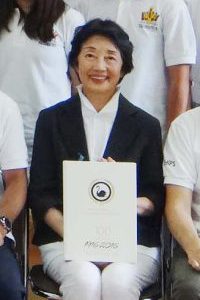
1987年~大竹SLSC、湯河原LSC、下田LSC、Maroochydore SLSC
勤務先の豪日交流基金がライフセービングを支援していたので、オフィスにいつもライフセーバーが訪ねて来ていた。そして、下田LSCのメンバーに大会を見に来てください、と何度も言われていた。1987年頃一人でこわごわプールの大会に行ったら、私のことを誰も知らないのに、たくさんのメンバーが飛び切りの笑顔で「こんにちは!」と声をかけてくれた。その瞬間、ライフセービングを、仕事を離れたボランティアとしてやりたい、と思った。
これがライフセービング を始めたきっかけです。
Akiko Hisamatsu
Honorary Vice President of Shimoda Life Saving Club and Maroochydore Surf Life Saving Club
Worked for the Australia-Japan Foundation at the Australian Embassy in Tokyo.
How I came across Lifesaving:
One day a lifesaver came to invite me to their pool competition. I was a bit worried about going to the venue as I did not know anybody there. However, every single lifesaver whom I passed by, greeted, “hello” to me with a big smile. Since then, I wanted to help behind the scenes as a volunteer to lifesaving activities in my spare time.


